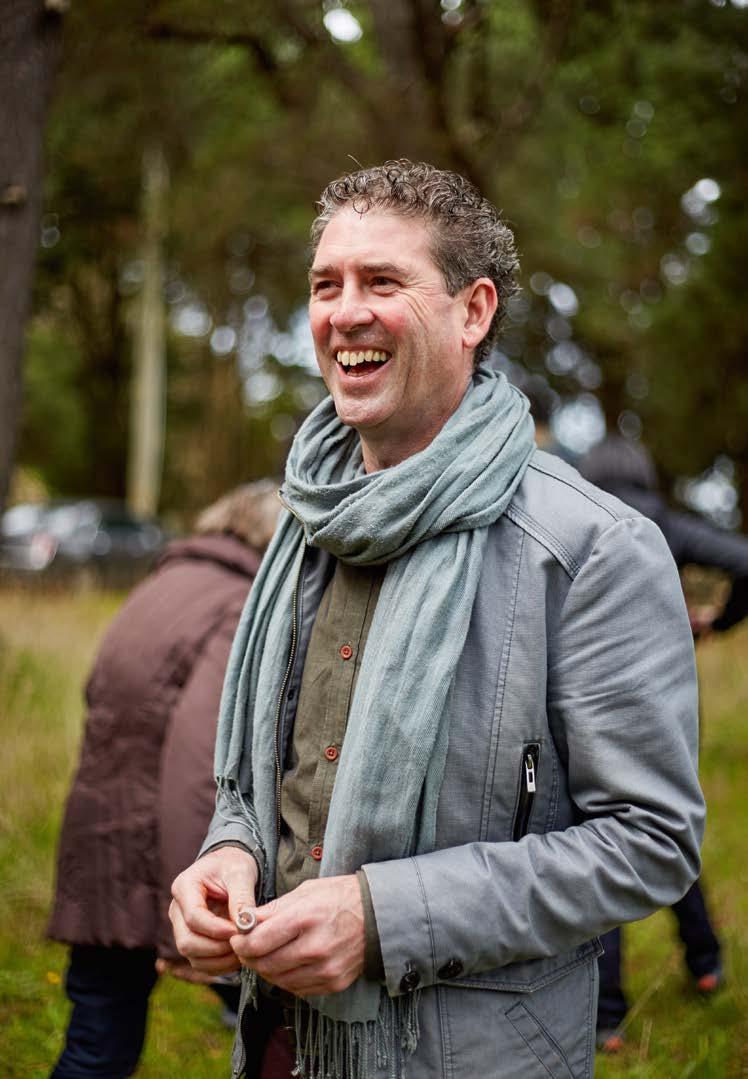
3 minute read
FROM EARTH Where the wild mushrooms grow with Max Paganoni
FROM EARTH
Where the wild mushrooms grow with Max Paganoni
Something happens in Red Hill every year when the temperature drops and the radiata pines that line the hinterland’s winding roads wait like gentle guardians full of grace and patience. The damp, volcanic soil smells ripe here as the wind blows across from Port Phillip and Western Port to intertwine where the wild mushrooms grow. Down below, at the base of these magnificent coniferous evergreen clusters of spiky needles with their cones hanging like handcrafted carryalls, there is action. Fast and furious. Fleshy and fragrant. Fungi full of Mornington Peninsula goodness.
The autumn and winter bounty is generous and forgiving here, just outside Max’s Restaurant on Red Hill Estate where the root systems of the pines have become covered with fungus and are producing flashes of fruit. The mushrooms grow almost as fast as they are picked. Each day their corpulent heads lean left to right as they move towards the light trickling through the branches overhead. This is slippery jack and saffron milk cap mushroom country. This is where the cycle of life turns quietly over 24 hours without a sound when no one is around.
Award-winning chef Max Paganoni explains: “Radiata pines were originally planted across the Peninsula as windbreaks to protect orchards and farms. The Mornington Peninsula has a cool climate and there’s plenty of moisture. Being at a high altitude here helps too. I had no idea that mushrooms grew out front until I returned to the Peninsula from a truffle-hunting expedition to Italy about 15 years ago. I was mad for truffles back then. A group of Italian ‘nonnas’ who I had met while away came back to Australia with me. We went walking one day and they discovered them, and I’ve picked them every season since. They grow every day from May through winter and sometimes you can find them growing later in the year. The north side of the tree is where you’ll find the most because of the light. I walk out the front of the restaurant and come back with a basket full.”
For those of you who have never gone mushroom foraging, Max says there is one golden rule: know what you are doing. Expert knowledge is required because the wrong kind of mushroom can get you into serious trouble. Many toxic mushrooms closely resemble common varieties. Max continues: “It’s incredibly important to know which mushrooms you can eat. I stick with the slippery jacks and saffron milk caps because I know they are safe. That’s part of what’s so great about doing our mushroom meanders on the estate’s private property. We know what we are doing. You get whole families learning how to identify mushrooms. Learn what toadstools look like or which mushrooms can be eaten. After we’ve done the mushroom hunt, we come back to the restaurant and cook with mushrooms. Mushroom soup. Duck with mushrooms. Whatever I make up. I’ve always cooked like that. I’ll be driving and see pumpkins on the side of the road and that’s it. It’s time for a pumpkin recipe.” Seasonal cooking is a big part of what this Hastings-born chef, whose family’s roots are planted in Italian soil, does so well. He continues: “It was 1994 and I was driving past this property, saw Sir Peter Derham who was the owner then, got out and said: ‘Why would you have a vineyard without food?’ There’s 10ha under vine here today at Red Hill Estate. Sir Peter replied: ‘If you lease it, I will build it.’ We shook hands and that was it. Now people come to the restaurant to meet and discuss mushrooms growing out the front of Red Hill Estate. Some walk with me and some follow in cars. We always need the rain to have a good crop. Rain then a cold snap. If there’s no rain, then the mushroom season is late.”
And what wine pairs well with these fresh fungal delights? “Pinot noir,” says Max. There you have it.











